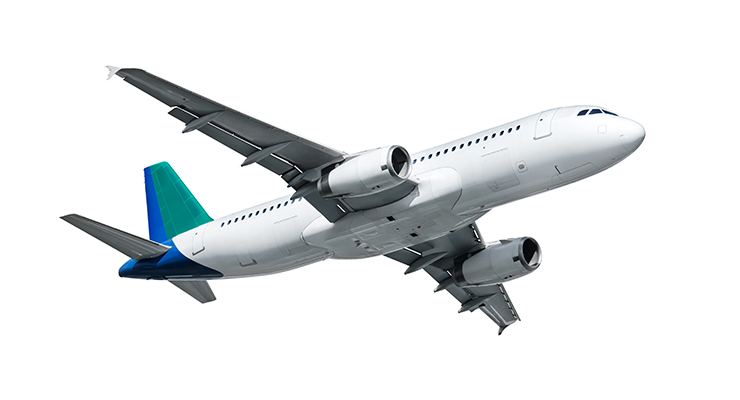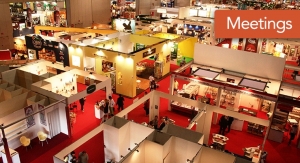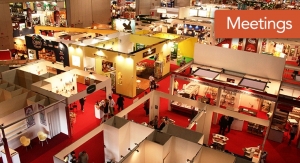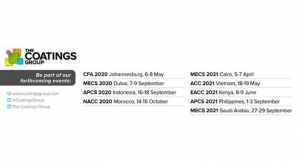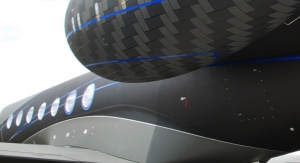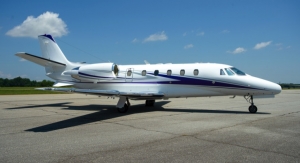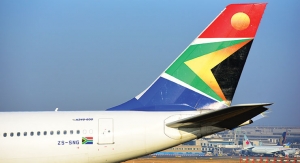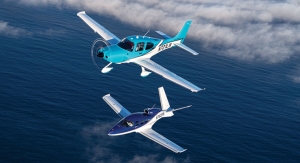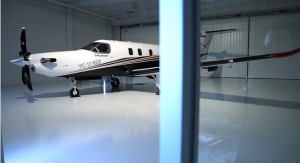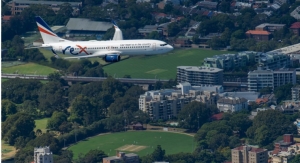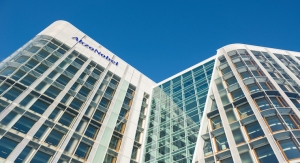Allied Market Research07.29.20
Application of coatings in aircrafts offers different benefits in terms of efficiency, durability, and costs. Aircraft operators and defense organizations have realized the importance of coatings to improve safety and efficient operations. Launch of new types of coatings and collaborations to develop novel coating systems have become the recent trends across the globe. Moreover, there have been partnerships to disinfect the entire fleet to ensure safety of passengers and crew. In some cases, the coating systems have been developed; while in some cases, the testing has been carried out to determine efficacy in different conditions. The market for aerospace coatings is gaining traction. According to the report published by Allied Market Research, the global aerospace coatings market is estimated to reach $2.43 billion by 2023. Following are some of the recent trends going on in the industry.
Applying antimicrobial coating for the entire fleet would ensure safety for passengers. Realizing the importance, Flexjet applied the MicroShield 360, an FDA-approved antimicrobial shield coating system to its entire fleet. With nearly 160 aircrafts in its fleet, the company joined hands with the U.S.-based MRO company Constant Aviation to apply the coating. The MicroShield 360 protocol needs the cleaning of aircraft cabin prior to following a three-step process. The electrostatic disinfectant application is carried out in a first step. Then a specially formulated disinfectant is applied to all the surfaces. In the last step, a proprietary coating formula is applied to give a biostatic finish to all the surfaces. This offers prevention of pathogens from surviving on those surfaces. The MicroShield 360 coating is non-toxic, odorless, colorless, and hypoallergenic. It is safe for animals and humans. Moreover, the company which has approval to apply had tested it for its effectiveness in lowering down contamination of viruses, bacteria, yeast, fungi, and odors. This treatment has an ability to offer protection to passengers from MRSA, Norovirus, E. coli, flu strains, C. diff, and gram-positive & gram-negative bacteria.
The launch of new products suitable for aerospace applications is a recent trend in the industry. PPG launches PPG Surface Seal hydrophobic coating. This coating offers resistance to ultraviolet (UV) light and compatible with many aerospace cleaning and maintenance liquids. It is rain and water shedding coating system that can be applied to glasses and anti-static coated glass windshields. It is suitable to offer visibility during wet conditions for pilots. Moreover, it improves fuel efficiency & aerodynamic movement and reduces overall weight if replaced with windshield-wiping system. PPG introduces the coating to aerospace operators that is cost-effective and offers enhanced visibility.
Along with the launch of new products, there have been collaborations to evaluate novel coatings for prevention of corrosion. The Air Force Research Laboratory (AFRL) and the Republic of Singapore Air Force have been working on a project for testing of a coating for corrosion prevention. A non-chromium coating has been tested in a rainforest environment. Corrosion Prognostics LLC collaborated with AFRL’s Corrosion Integrated Product Team at the RSAF Base to set up a Corrosion Environment Measurement System (CEMS-3000). The testing would offer data related to non-chrome coatings in corrosion environments to determine viability. Then it will be applied to prognostic corrosion models for prediction of the corrosion patterns of materials on Air Force and DoD assets. The project received the support from the F-16 Program Office. The Office would utilize the data generated from the testing to develop the coatings technology. Nathan Hawkes, the Program Manager at F-16, commented that this project is expected to provide valuable insights on coating systems and determining corrosion inhibition performance for aircrafts. With development of corrosion predictive models, non-chrome coated materials would help aircraft assets to extend their lives and save costs.
Determining the importance of coatings into saving costs, improving efficiency, and increasing durability of parts of aircrafts, defense organizations of various countries have collaborated with market players to apply coating. The US Air Force (USAF) signed a contract with Adaptive Surface Technologies (AST) for development of icephobic coating. This development will be based on the results obtained from the Small Business Innovation Research (SBIR) Phase I. The coating will improve in-flight and pre-flight anti-icing characteristics for military aircraft and avionics. David Ward, the CEO at AST, outlined that the AST’s existing technology will be used for development of an intrinsically icephobic coating system. This will help solving many challenges related to commercial and military aircraft icing mitigation. This coating is expected to offer cost saving benefits along with environmental benefits. The Active Performance Ingredients (API) packages of AST will be blended with a low surface energy binder system for development of a coating system that offers robustness and mechanical durability for aircrafts.
Applying antimicrobial coating for the entire fleet would ensure safety for passengers. Realizing the importance, Flexjet applied the MicroShield 360, an FDA-approved antimicrobial shield coating system to its entire fleet. With nearly 160 aircrafts in its fleet, the company joined hands with the U.S.-based MRO company Constant Aviation to apply the coating. The MicroShield 360 protocol needs the cleaning of aircraft cabin prior to following a three-step process. The electrostatic disinfectant application is carried out in a first step. Then a specially formulated disinfectant is applied to all the surfaces. In the last step, a proprietary coating formula is applied to give a biostatic finish to all the surfaces. This offers prevention of pathogens from surviving on those surfaces. The MicroShield 360 coating is non-toxic, odorless, colorless, and hypoallergenic. It is safe for animals and humans. Moreover, the company which has approval to apply had tested it for its effectiveness in lowering down contamination of viruses, bacteria, yeast, fungi, and odors. This treatment has an ability to offer protection to passengers from MRSA, Norovirus, E. coli, flu strains, C. diff, and gram-positive & gram-negative bacteria.
The launch of new products suitable for aerospace applications is a recent trend in the industry. PPG launches PPG Surface Seal hydrophobic coating. This coating offers resistance to ultraviolet (UV) light and compatible with many aerospace cleaning and maintenance liquids. It is rain and water shedding coating system that can be applied to glasses and anti-static coated glass windshields. It is suitable to offer visibility during wet conditions for pilots. Moreover, it improves fuel efficiency & aerodynamic movement and reduces overall weight if replaced with windshield-wiping system. PPG introduces the coating to aerospace operators that is cost-effective and offers enhanced visibility.
Along with the launch of new products, there have been collaborations to evaluate novel coatings for prevention of corrosion. The Air Force Research Laboratory (AFRL) and the Republic of Singapore Air Force have been working on a project for testing of a coating for corrosion prevention. A non-chromium coating has been tested in a rainforest environment. Corrosion Prognostics LLC collaborated with AFRL’s Corrosion Integrated Product Team at the RSAF Base to set up a Corrosion Environment Measurement System (CEMS-3000). The testing would offer data related to non-chrome coatings in corrosion environments to determine viability. Then it will be applied to prognostic corrosion models for prediction of the corrosion patterns of materials on Air Force and DoD assets. The project received the support from the F-16 Program Office. The Office would utilize the data generated from the testing to develop the coatings technology. Nathan Hawkes, the Program Manager at F-16, commented that this project is expected to provide valuable insights on coating systems and determining corrosion inhibition performance for aircrafts. With development of corrosion predictive models, non-chrome coated materials would help aircraft assets to extend their lives and save costs.
Determining the importance of coatings into saving costs, improving efficiency, and increasing durability of parts of aircrafts, defense organizations of various countries have collaborated with market players to apply coating. The US Air Force (USAF) signed a contract with Adaptive Surface Technologies (AST) for development of icephobic coating. This development will be based on the results obtained from the Small Business Innovation Research (SBIR) Phase I. The coating will improve in-flight and pre-flight anti-icing characteristics for military aircraft and avionics. David Ward, the CEO at AST, outlined that the AST’s existing technology will be used for development of an intrinsically icephobic coating system. This will help solving many challenges related to commercial and military aircraft icing mitigation. This coating is expected to offer cost saving benefits along with environmental benefits. The Active Performance Ingredients (API) packages of AST will be blended with a low surface energy binder system for development of a coating system that offers robustness and mechanical durability for aircrafts.

